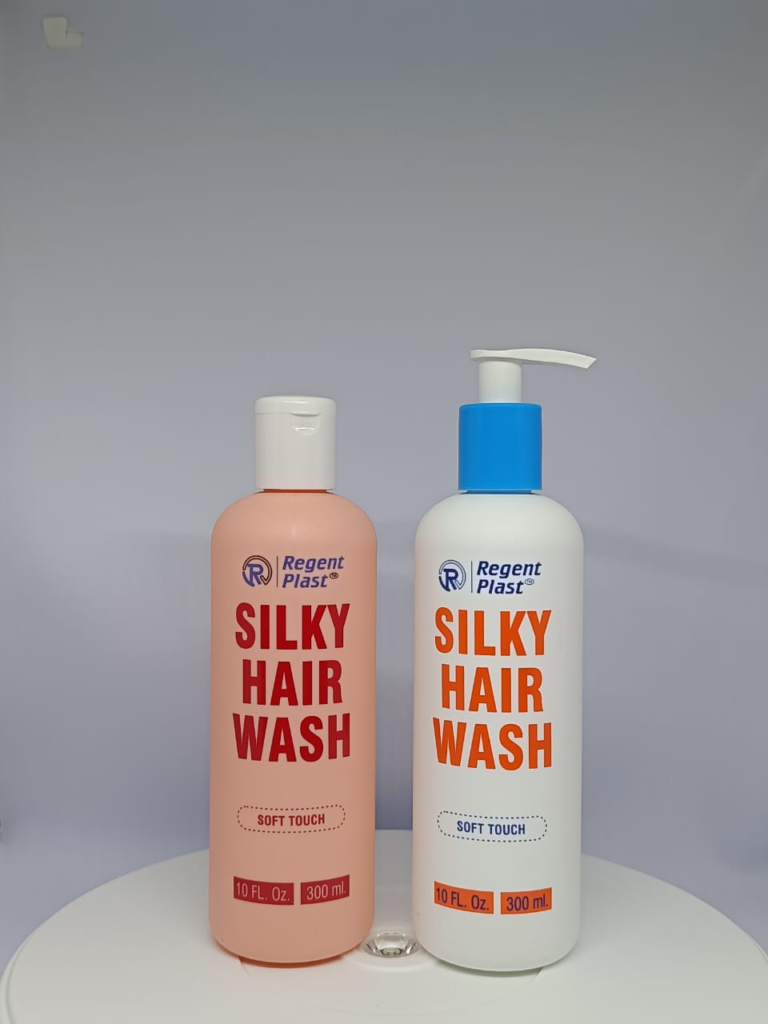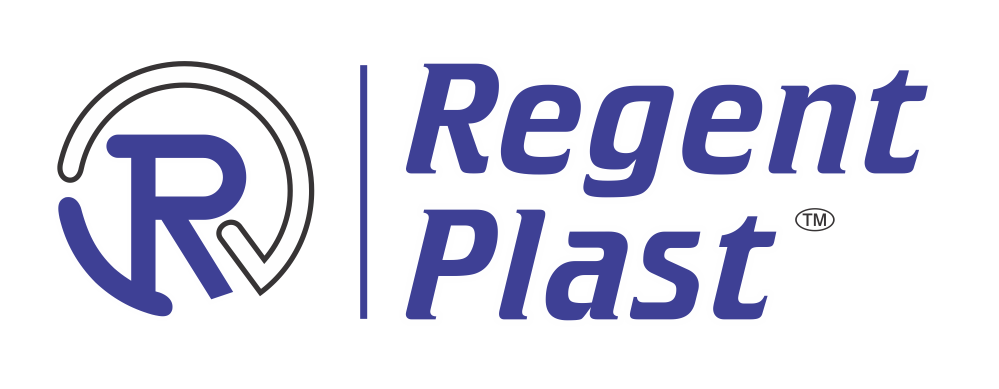Packaging has become more than a container—it’s now a statement of sustainability, design creativity, and brand authenticity. In 2025, health and beauty packaging stands at the intersection of innovation and responsibility. The demand for recyclable and refillable formats, the use of digital technology, and consumer-driven personalization are transforming how brands present their products.
For manufacturers, especially in HDPE bottle packaging, this shift is both an opportunity and a challenge. At Regent Plast, we’ve seen firsthand how brands are moving beyond simple functionality to packaging that embodies values, aesthetics, and user experience. Let’s break down what’s driving the evolution and where it’s heading.
Trends Dominating 2025
1. Retro aesthetics & minimalism
Brands are tapping into nostalgia while keeping designs clean and functional. Packaging often includes heritage-inspired cues—bold fonts, vintage silhouettes—paired with minimalist labeling that ensures easy recycling.
2. Refillable and reusable systems
The shift toward circularity is unmistakable. Shampoo bottles, cream jars, and even soft-touch bottles are being designed for multiple uses. By offering refill packs, brands cut waste while building long-term consumer loyalty.

3. Inclusive and sensory-led design
In 2025, packaging is about experience. Soft-touch bottles with textured finishes, embossed cream jars, and ergonomic shampoo bottles appeal to both sight and touch, creating lasting impressions.
4. Emotional connection
Packaging is no longer just shelf-ready—it’s memory-ready. From refillable legacy bottles meant to be cherished, to designs celebrating cultural or heritage aesthetics, packaging now holds sentimental and brand-defining value.
Sustainability: The Non-Negotiable
Sustainability is no longer a trend—it’s the baseline. Consumers actively seek brands that commit to eco-friendly practices.
- Recyclable & reusable materials: HDPE remains a trusted choice for its durability and recyclability. With availability of Post Consumer Recycled Plastics (PCR), HDPE Bottles are able to provide sustainable packaging and reduce dependence on glass, cardboard, or aluminum accessories.
- Material reduction & minimalism: Smaller caps, thinner walls, and modular bottle systems reduce material usage while simplifying the recycling process.
- Local sourcing & certifications: Eco-conscious brands highlight provenance and back their claims with certifications like FSC, ISO 14001, and Bottle to Bottle.
- Legacy refillables: Instead of disposable packaging, premium lines are introducing refillable cream jars and shampoo bottles designed to last. This reinforces a brand’s sustainability promise while building emotional attachment.
At Regent Plast, we manufacture HDPE plastic bottles that are 100% recyclable and designed for long product life. Our portfolio includes shampoo bottles, cream jars, and soft-touch bottles that align perfectly with brands embracing circularity.
Technological Innovations Shaping Packaging
The health and beauty industry is leveraging tech to enhance consumer engagement and improve sustainability.
- Smart packaging: QR codes and NFC chips on bottles provide tutorials, ingredient sourcing details, and even usage tracking. This not only builds transparency but also strengthens trust.
- 3D printing: Rapid prototyping of cream jar closures or shampoo bottle shapes enables brands to test unique ideas quickly and at lower costs, while reducing material waste.
- Digital printing: Small-batch runs with personalized labels or seasonal messages allow flexible marketing without the need for mass production.
Regent Plast supports brands in adapting to these changes with HDPE bottle designs that are compatible with smart labels, digital printing, and refill systems.
Design & Creativity
Consumers want packaging that’s both functional and beautiful. Some of the strongest design directions in 2025 include:
- Luxe mechanisms: Cream jars with push-button dispensers or serum bottles with precision droppers elevate everyday routines into premium experiences.
- Bold contrasts & tactile finishes: Vibrant colors, embossed textures, and soft-touch coatings make packaging memorable in both look and feel.
- New minimalism: Stripped-down designs with fewer components mean easier recyclability and reduced waste. A shampoo bottle with a single-material cap or label-free jar embodies this approach.
- Multi-sensory experiences: Embossing, foil stamping, or even scented packaging enhances unboxing, adding a sensory connection that’s hard to forget.
Our soft-touch HDPE bottles deliver exactly this kind of tactile appeal while ensuring recyclability—a perfect balance of design and responsibility.
Consumer Engagement & Personalization
Personalization continues to be a strong driver in 2025. With digital printing and flexible packaging systems, brands can deliver limited runs with personalized messaging. This makes products feel unique, even in mass markets.
Transparency also plays a role. Consumers now demand to know where materials come from, how recyclable they are, and whether the brand is truly eco-conscious or just greenwashing. Packaging has become a storytelling platform to showcase these values.
For instance, a refillable HDPE shampoo bottle can carry a QR code that tells the consumer its recycled content percentage, the refill program available, and disposal instructions. It’s packaging that educates and engages.
Packaging as Brand Storytelling
Every brand has a story, and packaging is its front-line narrator. Whether it’s about sustainability, luxury, heritage, or playfulness, packaging translates brand identity into consumer touchpoints.
- Cultural storytelling: Incorporating traditional motifs or regional inspirations creates resonance with local audiences.
- Heritage cues: Retro fonts, embossing, and bold colors help legacy brands refresh without losing authenticity.
- Luxury positioning: Matte finishes, soft-touch coatings, and unique dispensing mechanisms elevate perceived value.
- Scientific precision: Minimalist, clinical-style packaging appeals to consumers seeking efficacy and trust in beauty products.
At Regent Plast, we work with global brands to design HDPE cream jars, shampoo bottles, and soft-touch bottles that are not only functional but also storytelling canvases—bringing brand identity to life.
Key Strategies for Brands in 2025
To stay ahead in the competitive health and beauty market, brands should focus on:
- Choosing recyclable or biodegradable materials like HDPE, glass, or aluminum.
- Avoiding unnecessary secondary packaging layers.
- Designing modular or refillable containers to extend product life.
- Using digital features to educate and engage consumers.
- Committing to transparency in sourcing and production.
These strategies are not just trends—they’re becoming essential expectations. Packaging has shifted from an afterthought to a central element of brand success.
Health and beauty packaging in 2025 is defined by a balance of sustainability, creativity, and technology. It’s about creating packaging that lives beyond the shelf—whether through emotional connection, refillable systems, or digital engagement.
For brands, the opportunity is clear: packaging is just as important as the product itself. And for manufacturers like Regent Plast, the role is to provide packaging solutions that combine performance, recyclability, and standout design.
At Regent Plast, we specialize in HDPE plastic bottle manufacturing for health and beauty brands worldwide. From shampoo bottles to cream jars to soft-touch bottles, our packaging solutions are designed for recyclability, durability, and brand storytelling. If you’re looking to innovate while committing to sustainability, Regent Plast is your trusted partner. We offer both open item packaging solutions, as well as customized packaging.

